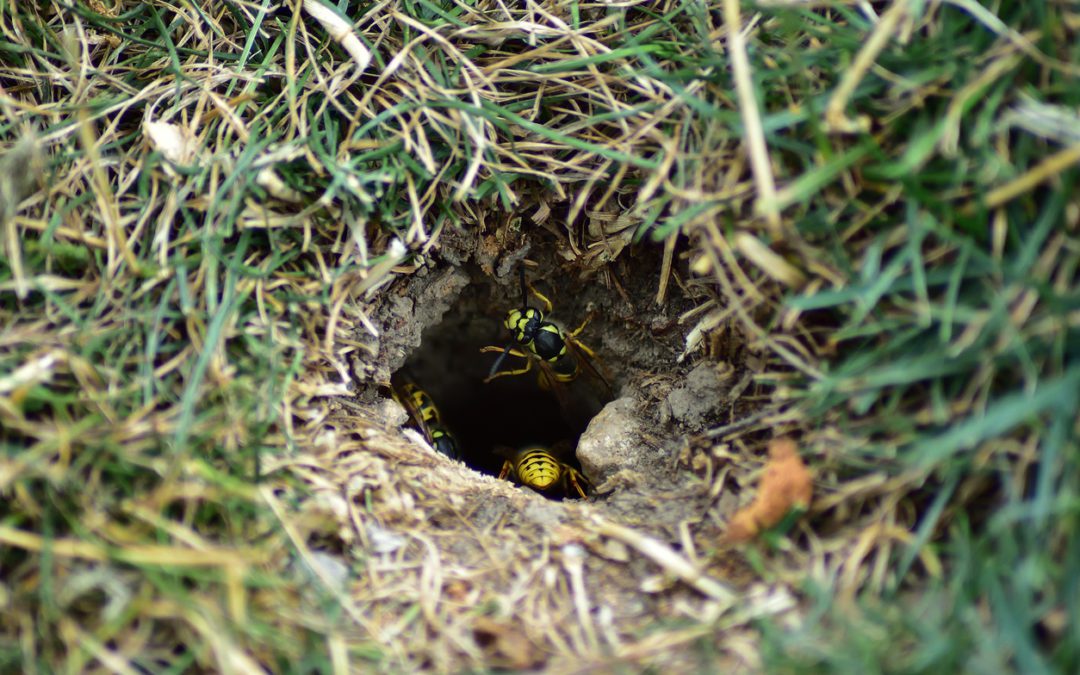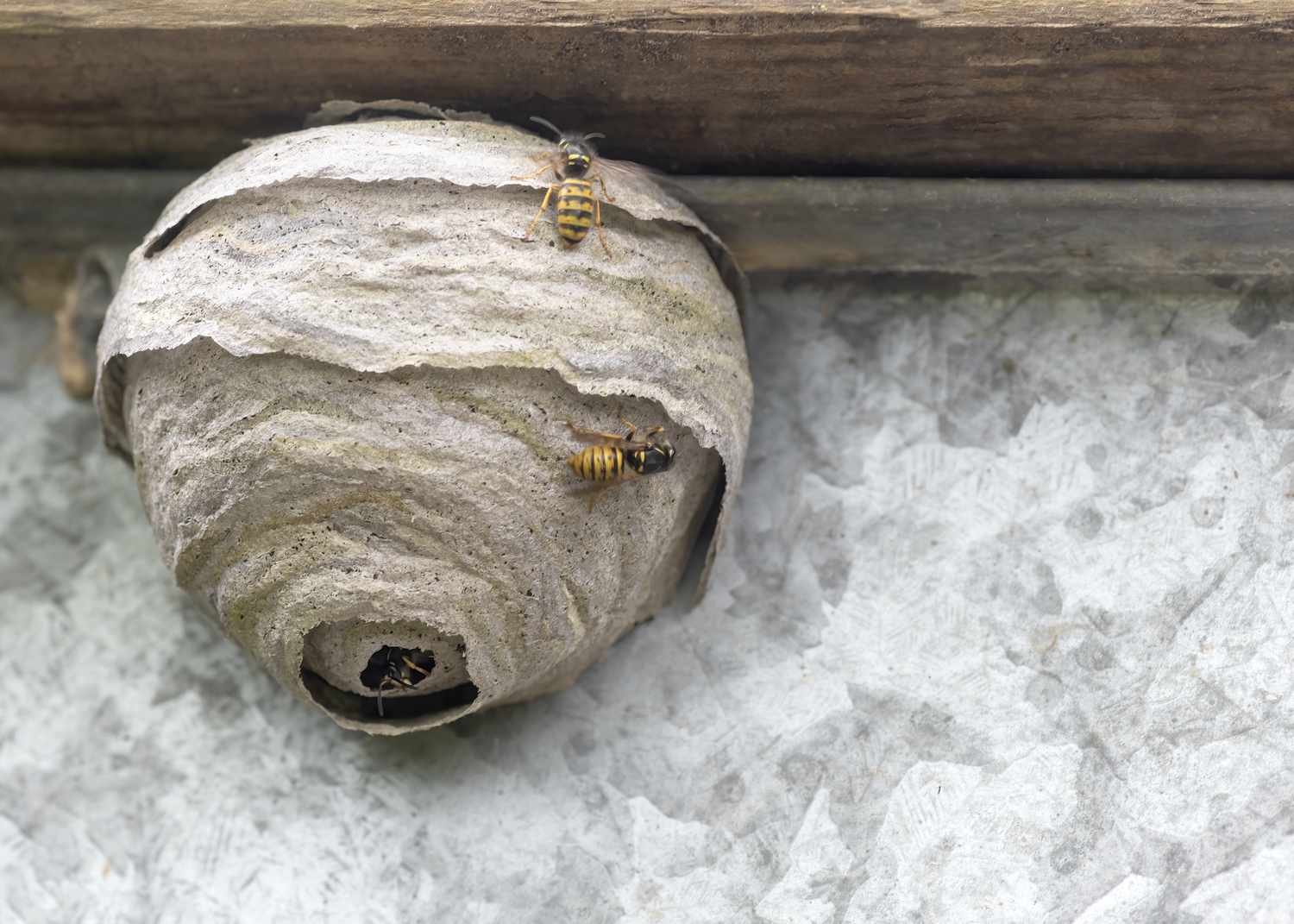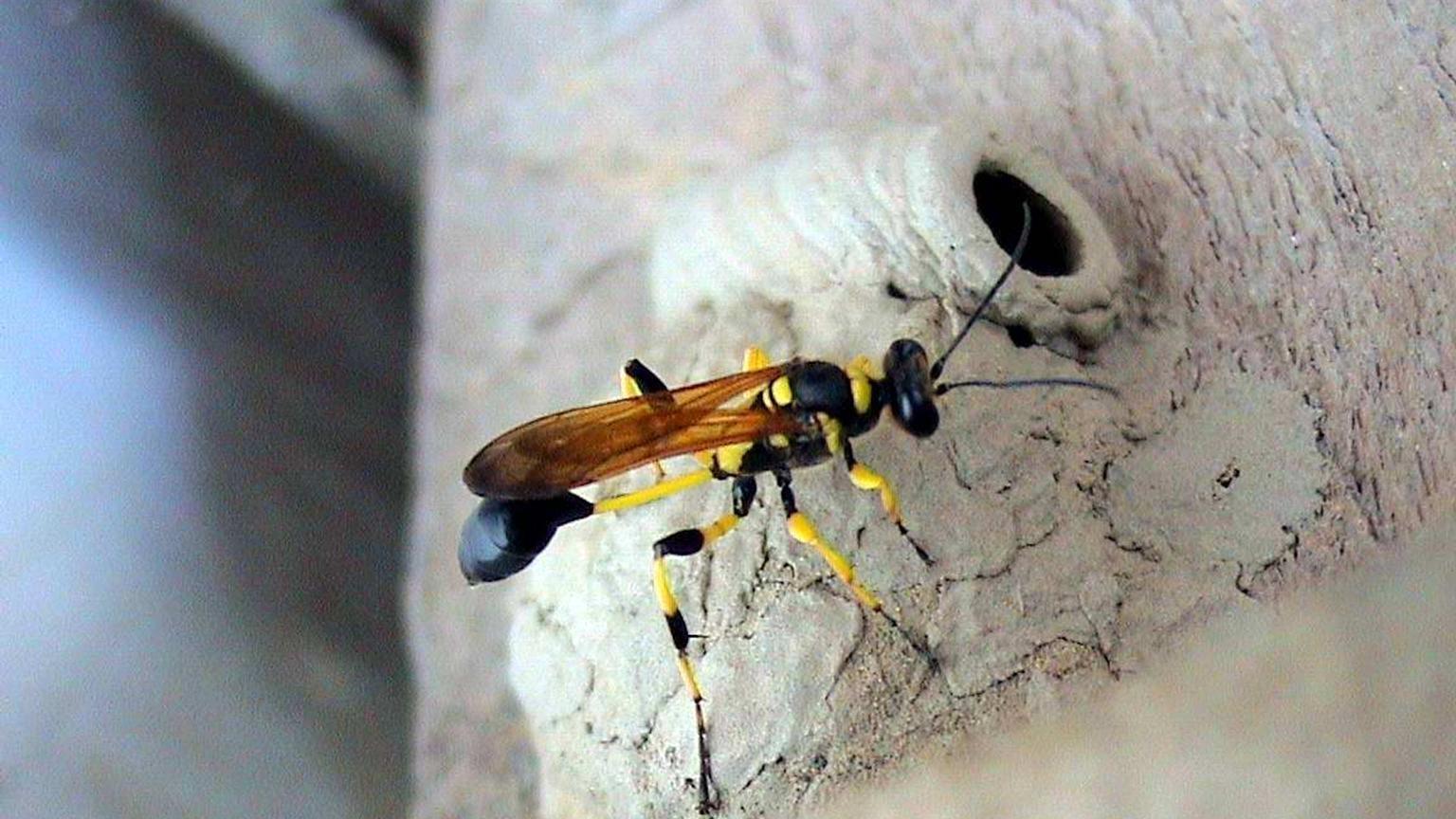Wasps are a common sight during the summer months, and their nests can be found in various locations. There are several types of wasp nests, each with their unique features. Understanding the different types of wasp nests is important as it determines the level of threat and the best course of action.
In this article, we will explore the four most common types of wasp nests and their characteristics. We will also discuss the shape of wasp nests and how to identify them.
You are reading: 4 Types Of Wasps Nests And Their Unique Features
4 Types Of Wasps Nests And Their Unique Features
Yellowjacket Wasp Nest

Yellowjacket wasps are a common type of wasp that build large nests to house their colonies. These bee-sized social wasps are black with yellow markings and are often confused with other wasps such as hornets and paper wasps.
Yellowjacket nests are usually built in trees, shrubs, or in protected places such as inside man-made structures, or in soil cavities, tree stumps, mouse burrows, etc. .
The nests are made of paper and have a single opening. The eastern yellowjacket builds its nests underground, also with the peak worker population between 1000 and 3000 individuals, similar to the German yellowjacket. The nests contain multiple, horizontal tiers of combs within, and larvae hang within the combs.
Yellow jacket nests can vary in size, ranging from the size of a tennis ball to a basketball. They can house hundreds or even thousands of wasps.
In some parts of the coastal United States, winters are mild enough for nests to last multiple seasons, often with several egg-laying queens. These nests can reach an excess of 100,000 adult wasps.
Paper Wasp Nest

Paper wasps are a type of vespid wasp that gather fibers from dead wood and plant stems, which they mix with saliva to construct nests made of gray or brown papery material.
The name “paper wasps” typically refers to members of the vespid subfamily Polistinae, though it often colloquially includes members of the subfamilies Vespinae (hornets and yellowjackets) and Stenogastrinae, which also make nests out of paper.
Read more : Types Of Snakes: Every Species You Need To Know
Paper wasps are often found in residential yards, and they build their comb nests to hang from objects like twigs and branches of trees and shrubs, porch ceilings, the tops of window and doorframes, soffits, eaves, attic rafters, deck floor joists, railings, and more.
The nests of most true paper wasps are characterized by having open combs with cells for brood rearing, and a ‘petiole’, or constricted stalk, that attaches the nest to a branch or other structure. Each nest has open, uncovered cells where the eggs are laid.
Paper wasps are not an aggressive species by nature, but they will sting if they are threatened.
Some unique features of paper wasp nests include:
– Open comb structure: The nests of most true paper wasps have open combs with cells for brood rearing.
– Petiole: The nests have a ‘petiole’, or constricted stalk, that attaches the nest to a branch or other structure.
– Hanging nests: Paper wasps build their comb nests to hang from objects like twigs and branches of trees and shrubs, porch ceilings, the tops of window and doorframes, soffits, eaves, attic rafters, deck floor joists, railings, and more.
– Uncovered cells: Each nest has open, uncovered cells where the eggs are laid.
It is important to note that paper wasps can be aggressive if their nest is disturbed, so it is best to contact a professional for removal if necessary.
Mud Dauber Nest

Mud daubers are a type of solitary wasp that construct their nests out of mud. These wasps are typically about ¾ to 1 inch in length and can vary in coloration between species.
Mud daubers are not normally aggressive, but can become belligerent when threatened. The nests are constructed from mud by a single mated female and they can vary in shape, from pipe-shaped to globular.
Mud dauber nests are often found in sheltered areas such as under eaves, porch ceilings, open garages or sheds, barns, protected building walls, and attics.
The shape of the mud dauber nest is a key indicator of the wasp group. For example, female black-and-yellow mud daubers will construct their nests of many short mud tubes measuring about 1” (25 mm) long that are built side-by-side. On the other hand, the organ pipe mud dauber constructs a nest comprised of many long mud tubes (20+ cm) that resemble pipes on a pipe organ.
Mud daubers undergo complete metamorphosis, which means they pass through four stages during their lifecycle – egg, larvae, pupae (cocoon), and adult.
Read more : The Top 10 Scariest Sharks From Giants To Jaws
Depending on the species, they complete one or two generations per year. In the spring, overwintering pupae develop into the adult. The new adult females will construct nests comprised of mud tubes of varying sizes.
Each mud tube is provisioned with several spiders that the female mud dauber catches and paralyzes with her venom.
Bald-Faced Hornet Nest
Bald-faced hornets are a type of wasp that build paper nests at least three or more feet off of the ground, usually in trees, shrubs, on overhangs, utility poles, houses, sheds, or other structures.
These nests can be as large as 14 inches in diameter and more than 24 inches in length. The nests are grey and paper-like, but they are enclosed unlike the open cone structure of other stinging hornets and insects, like yellowjackets and paper wasps.
Bald-faced hornet nests often grow to basketball size or larger and can contain over 400 workers. The nests are covered with paper carton and have a single opening where the bald-faced hornet workers enter and exit.
Bald-faced hornets primarily prey on flies and other insects for protein, but they occasionally scavenge for sugars. Bald-faced hornets can be quite aggressive when their space is invaded or the nest is disturbed, presenting a significant stinging hazard.
It is important to note that a bald-faced hornet’s nest should not be disturbed, and it is best to contact a professional for removal if necessary.
FAQS
1. What are the most common types of wasp nests?
The most common types of wasp nests are yellowjacket wasp nests, paper wasp nests, mud dauber nests, and bald-faced hornet nests.
2. How can I identify a wasp nest?
Wasp nests can be identified by their location, shape, and size. Yellowjacket nests are usually found in the ground and have a single opening. Paper wasp nests are often found hanging from tree branches or under eaves of buildings and have an open comb-like structure. Mud dauber nests are made of mud and are often found in sheltered areas such as under eaves or in garages. Bald-faced hornet nests are usually found in trees or shrubs and have a teardrop shape.
3. Are wasp nests dangerous?
Wasp nests can be dangerous if disturbed. Yellowjackets and bald-faced hornets can be particularly aggressive and their stings can be painful. It is best to contact a professional for removal if necessary.
4. How can I prevent wasp nests from forming?
Inspect your garden structures, buildings, and eaves for any openings or gaps that could serve as potential nest sites. Seal or caulk these openings to deter wasps from accessing them. Be thorough in your inspection to ensure all potential entry points are addressed. You can also use natural deterrents such as planting mint, eucalyptus, or citronella around your home.
5. Are wasps beneficial insects?
Yes, wasps are beneficial insects as pollinators and as natural ‘pest control.’ They prey on other insects, such as flies, and help to control their populations.
Source: https://petstutorial.com
Category: Animals










